Henri Matisse (1869-1954) was a clerk, set designer, printmaker, illustrator, sculptor, painter and one of the leading names in modern art.
Furthermore, Henri Matisse was the greatest exponent of the artistic movement called Fauvism, which flourished in France between 1901 and 1908.
Interestingly, he abandoned his law studies to devote himself to painting. He improved on courses and trips to Algeria, England, Italy, Germany, Morocco, Russia, United States, etc.
Biography
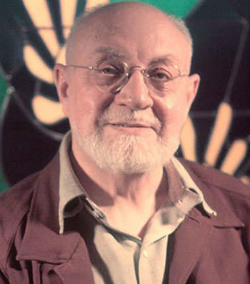
Henri-Émile-Benoît Matisse was born on December 31, 1869 in the town of Le Cateau-Cambrésis, northern France. He grew up in Bohain-en-Vermandois, in the Picardy region.
His improvement journey begins in 1888, when he went to study law at the University of Paris.
The following year, for health reasons, he interrupted his studies and began to dedicate himself to painting in a recreational way.
In 1891, he dropped out of law school and enrolled at the "Academia Julián" in Paris, dedicating himself to drawing and painting.
In 1894 he had his first daughter, Marguerite, with model Caroline Joblau. That same year, his first private exhibition took place at Galeria Vollard.
The following year, in 1895, he entered the Paris School of Fine Arts. As early as 1896, Matisse established himself locally and exhibited his paintings in the “Salão da Sociedade Nacional de Belas-Artes”.
In 1898, he marries Amélie Noellie Parayre, with whom he had two children: Jean (1899) and Pierre (1900). The following year marks the beginning of Matisse with the pointillist technique.
In 1901, Henri will exhibit for the first time at the “Salão dos Independentes”. Then, in 1903, he exhibited at the “Salon de Autumn”, thus breaking with the official exhibition circuit.
It will be in 1905 that the great artist will show the novelties at the “Paris Salon”, when he joins the “fauves” (beasts) and inaugurates the Fauvism. Note that between 1899 and 1905, many of Henri's canvases use the pointillist technique.
By 1908, Henri Matisse was already a world famous name. That's when the artist founded the Matisse Academy, which had its activities suspended in 1911.
Next year (1912), Matisse will be consecrated with his sculptures in New York City. In 1913, it will be the turn of his paintings, exhibited at the Armory Show of New York side by side the works of Marcel Duchamp.
1919 is the year in which composer Igor Stravinsky and Serguei Diaguilev will invite Matisse to design the costumes and sets for the play “The corner of the nightingale”, shown in London.
During the Second World War (1939-1945), Henri Matisse was dedicated to the graphic arts.
disease and death
In 1941, he will be treated for cancer, a disease that will kill him in the future. In 1947, he will do the illustrations for Charles Baudelaire's book, “the evil flowers”.
In 1950, Henri Matisse's health declined and he began to suffer from asthma and heart problems.
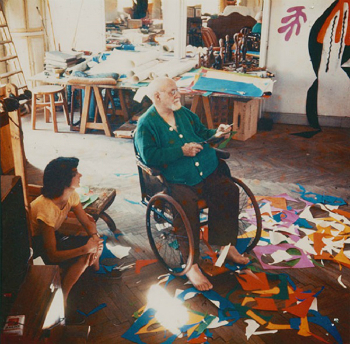
He dies four years later, on November 3, 1954, in the city of Nice, southern France, and is buried in Cimies Cemetery.
Characteristics and influences
In his works, Matisse always sought to maintain a balance between tranquility and liveliness, in paintings and sculptures that were simple and without elaborate details.
His drawings are full of arabesque lines and flat shapes, in which the colors seek maximum expression through the violence and purity by which they impose themselves.
This expressive language of color and design is present in several of Matisse's moments. The austere paintings with straight lines and geometric shapes or the cheerful and feminine figures stand out.
Sculpture is an extension of his way of painting and is often represented under a certain exaggeration in form.
Another point to be highlighted was his interest in impressionism. Despite rejecting the luminosity of this style, Henri Matisse noticed and painted the light with unprecedented intensity.
Later, he will turn to pointillism, with which he will work the strongest and most impetuous colors in Fauvism.
Matisse was Gustave Moreau's student at the Paris School of Fine Arts and was influenced by names such as:
- Édouard Manet (1832-1883);
- Cezanne (1839-1906);
- Paul Gauguin (1848-1903);
- van gogh (1853-1890);
- Auguste Rodin (1840-1917).
In addition, the influence of the cubism, Japanese and Muslim art.
Main works
Below are some of Matisse's works that had great prominence:
Woman reading (1894)
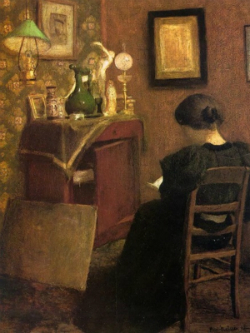
Dining table (1897)

Carmelina (1903)
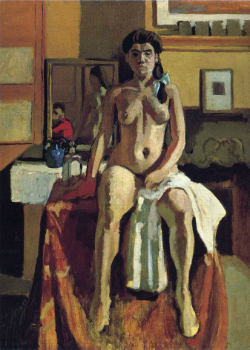
Portrait of Madame Matisse (1905)
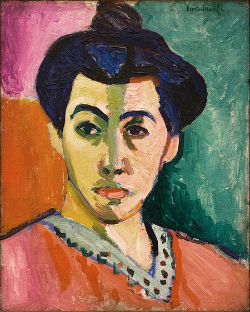
Woman with Hat (1905)

Bathers with a Turtle (1907)
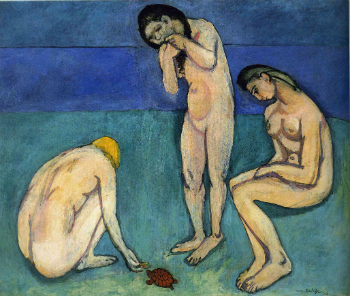
The Dance (1909)

Madame Yvonne Landsberg (1914)

The Moroccans (1915)

Interior in Nice (1919)

Read more about modern painting.


